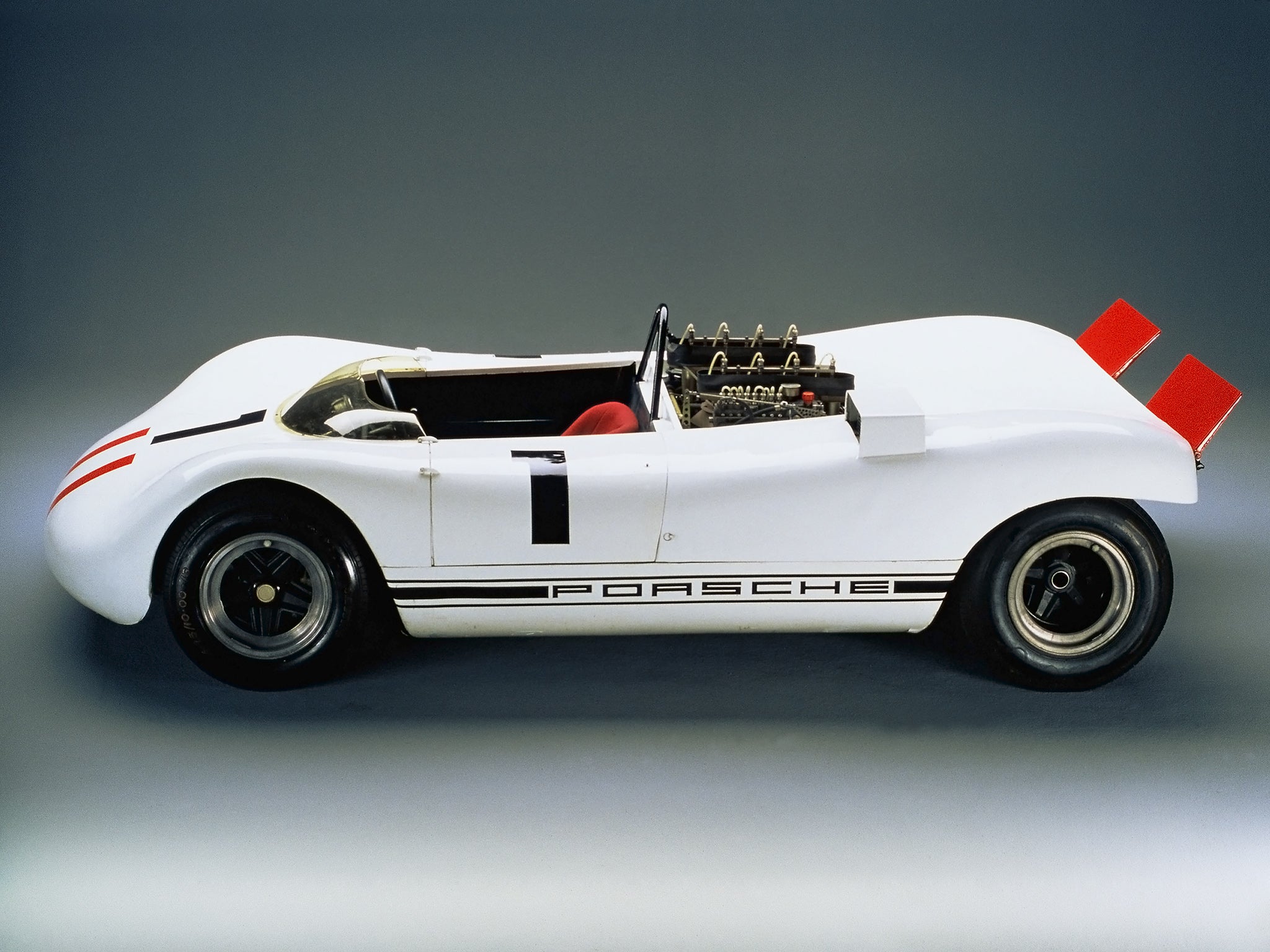 "Cé hé sin" (michael-m-mouse)
"Cé hé sin" (michael-m-mouse)
09/09/2015 at 14:53 • Filed to: Porsche, 909
 3
3
 2
2
 "Cé hé sin" (michael-m-mouse)
"Cé hé sin" (michael-m-mouse)
09/09/2015 at 14:53 • Filed to: Porsche, 909 |  3 3
|  2 2 |
Time for a Porsche, I think.
Have a 909 Bergspyder. Not, not a Burgspyder which would be racing in town, but a hillclimb special from 1968. It was built because Ferrari were said to be developing a lightweight racer, the 212, which in the event wasn’t a success.
The 909 had a 2 litre flat eight with 275 bhp and was used with some success in the 1968 season, although drivers preferred the older 910. No, I don’t know why the older car had a higher number.
The 909 was developed into the 908/3 which enjoyed considerable success with both Porsche and private teams up to the 1980s.



Some of the 909’s success was down to its light weight - it was only 385 kg empty and if you look at the interior you can see why. There’s almost nothing holding it together. Crashing was very much advised against.

 kanadanmajava1
> Cé hé sin
kanadanmajava1
> Cé hé sin
09/09/2015 at 15:54 |
|
909 had pretty neat ideas. A pressurized 15 liter titanium fuel tank that weigh only 660 grams was one of them. A fuel pump was unnecessary but refueling was tricky.

 904 GTS
> Cé hé sin
904 GTS
> Cé hé sin
09/09/2015 at 22:35 |
|
Another great idea of Hernn Piëch was the gear box. In order to get the car even more balanced, the 909 (therefore also the 908/3) sported a very unusual gear box lay our for a racing PORSCHE car. Traditionally, the differential housing immediately follows the engine and flywheel with a clutch, with actual box of gears following. In these two cars, the 909 and the 908/3 that constant changed: first came the engine, then the box of gear stuff, followed by the differential. The driver was moved further forward as did the drive train. The result - a PERFECTLY balanced car.